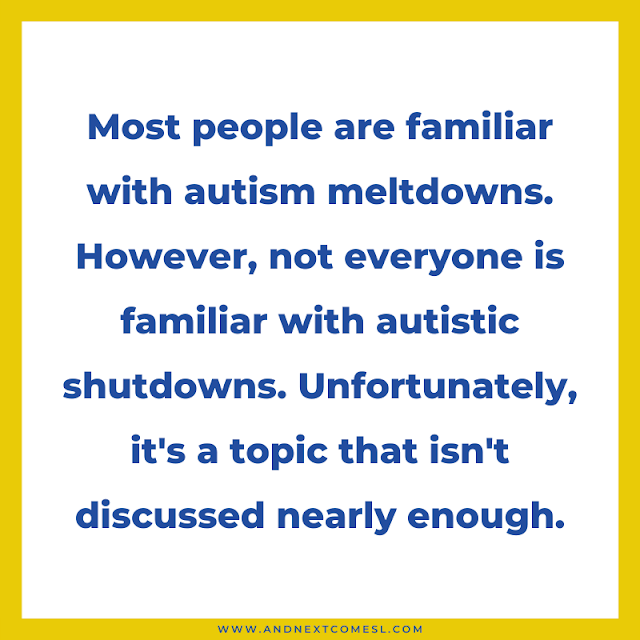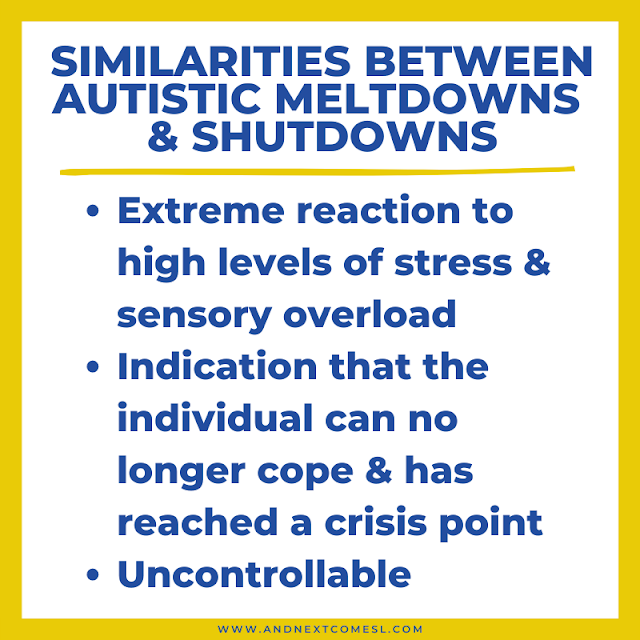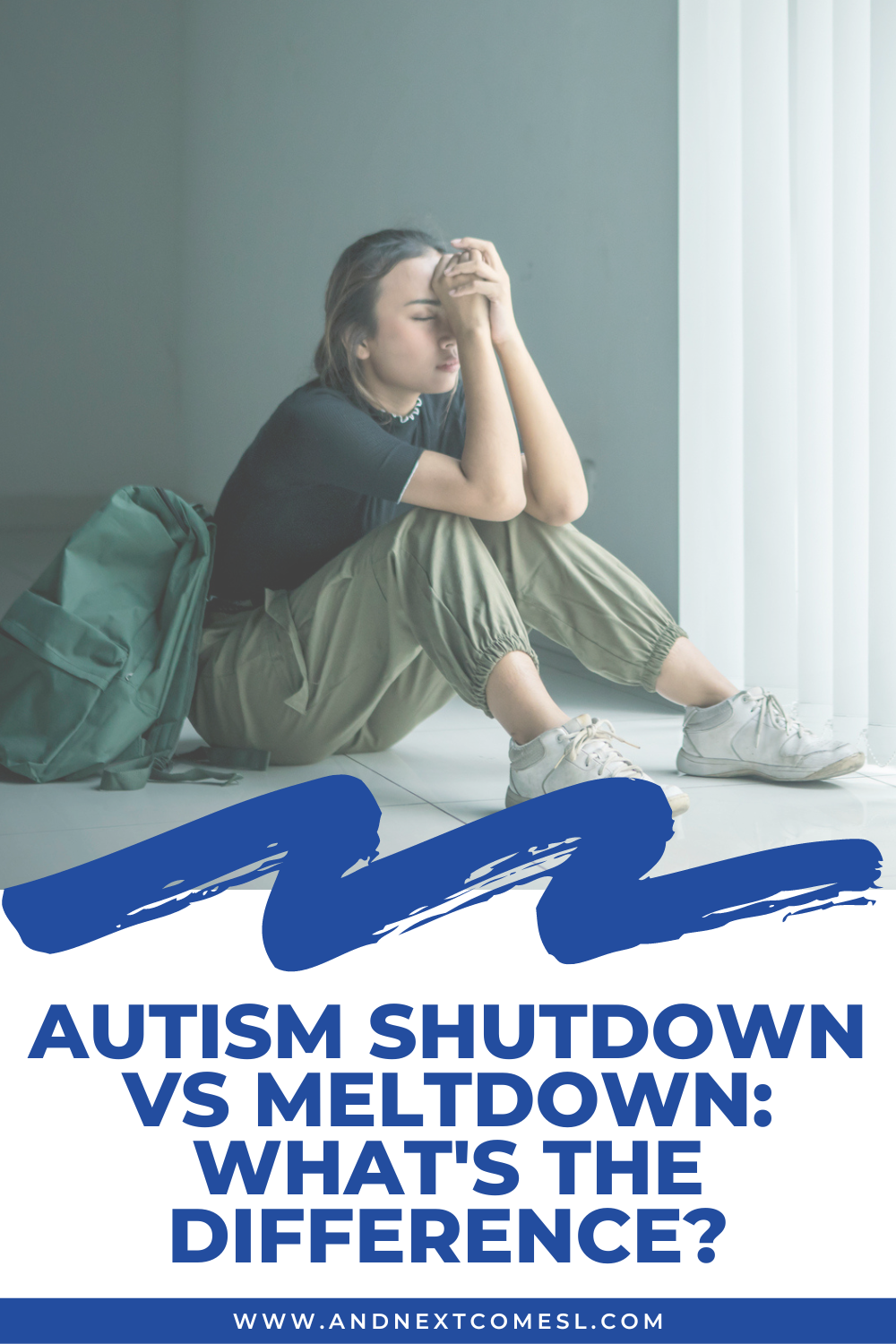Most people are familiar with autism meltdowns and the explosive reactions that come along with them.
However, not everyone is familiar with autistic shutdowns. It's, unfortunately, a topic that isn't discussed nearly enough.
Yet, shutdowns are an effect of sensory overload, just like a meltdown is. So it's definitely something that should be talked about more.
In order to understand the differences between meltdowns and shutdowns, we first have to look at how they are similar. Then we'll dive deeper into autism shutdown vs meltdown and the key differences between them.
Similarities Between Autistic Meltdowns and Shutdowns
There are a few similarities between a meltdown and a shutdown. For instance, both are an extreme reaction to high levels of stress or to the accumulation of issues and overwhelming sensory input over time. In other words, they both result from sensory overload.
It's also important to note that both a meltdown and a shutdown are usually out of control of the autistic individual. They don't have a meltdown or a shutdown on purpose nor can they control these responses.
Essentially, meltdowns and shutdowns indicate that the autistic individual can no longer cope and has reached a crisis point. However, there are important differences between the two that you should be aware of.
The Differences Between Meltdowns and Shutdowns
You've probably heard of flight, fight, and freeze responses before, right? Well, meltdowns are like the fight or flight response and are characterized by hitting, fleeing, biting, crying, aggression, and screaming. Shutdowns, on the other hand, are similar to a freeze response and are characterized by shutting down, going quiet, withdrawing, and staring off into space.
As a result, shutdowns are often more subtle and discrete than a meltdown so they can often go unnoticed. Meltdowns, however, are quite noticeable and obvious to spot as they're loud and explosive.
Another way to differentiate the two is to remember that meltdowns are outward, external responses whereas shutdowns are inward, internal responses. One's an explosion and one's an implosion.
Unlike a meltdown, shutdowns are used as a way to recover from the overstimulation and to get rid of the stress. It's essentially like going into protective mode. It's almost like you're restarting or rebooting your system (if you want to go with a computer analogy here). They go into shutdown mode as a way to keep themselves safe.
Another thing to keep in mind is that shutdowns often occur after a meltdown. In other words, meltdowns can lead to shutdowns.
As you can imagine, helping someone through a meltdown or a shutdown may require different approaches. So the way in which you offer support is going to vary, which is why it's important to be able to distinguish between the two.
A Quick Recap of Autism Shutdown vs Meltdown
Here's a quick overview of everything that was discussed above in terms of autistic meltdowns and shutdowns:
- Meltdowns and shutdowns are extreme reactions to high levels of stress and sensory overload and indicate that the person has reached a crisis point
- Meltdowns and shutdowns are both uncontrollable
- Meltdowns are similar to fight or flight responses whereas shutdowns are similar to a freeze response
- Shutdowns are subtle and often go unnoticed whereas meltdowns are loud, explosive, and easy to spot
- Meltdowns are outward, external responses whereas shutdowns are internal, inward responses
- Meltdowns may lead to shutdowns
- Helping someone through a meltdown requires a different approach than helping someone through a shutdown
Now that we've explored the topic of autism shutdown vs meltdown, you hopefully have a better understanding of the differences between the two, as well as their similarities. And hopefully you'll be better equipped to recognize when someone is experiencing one or the other.







